Blueberry kombucha is a widely loved second ferment flavor, and for good reason. It has a sweet, sour, and the deep and familiar flavor of blueberries. This kombucha flavor is an easy second ferment with lots of fizz!
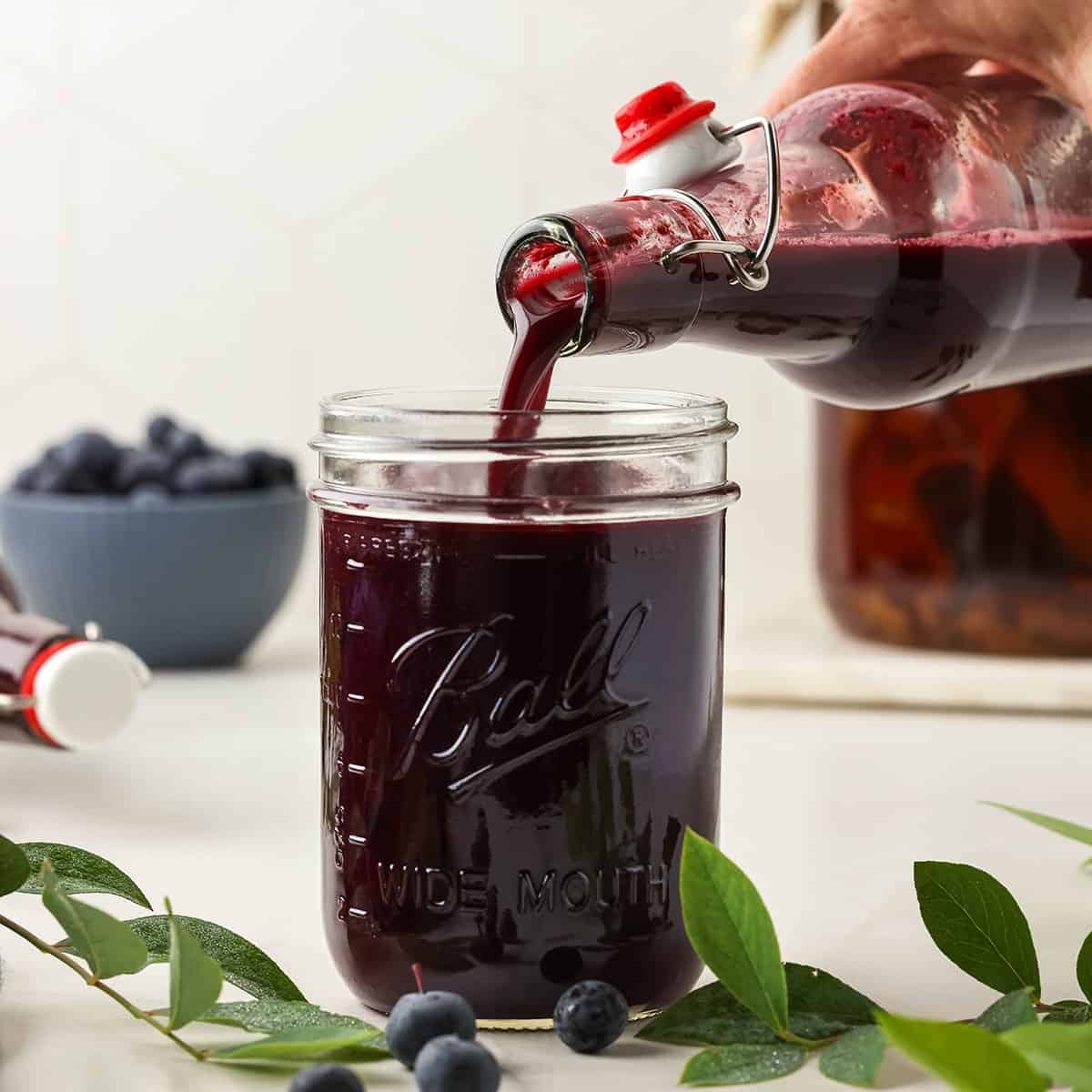
Want to save this post for later?
Flavored Kombucha at Home
Making flavored kombucha is a fun project and a great way to get artistic with your brew in a seasonal way. Using fruit or berries is the easiest way to fuel the second ferment process, since they provide natural sugars.
Some of my most favorite kombucha flavors have ingredients added right from my backyard, like dandelion, rose, lavender, and strawberry. This blueberry flavored homemade kombucha is a summer favorite too!
A second fermentation of kombucha is what adds the flavor and creates the fizz. It’s a super simple process and doesn’t take a ton of equipment or ingredients.
While sugar or honey does need to be added into this brew, it doesn’t turn out to be a sugary drink. The yeast and good bacteria metabolize the sugar to produce a carbonated and delicious probiotic rich drink!
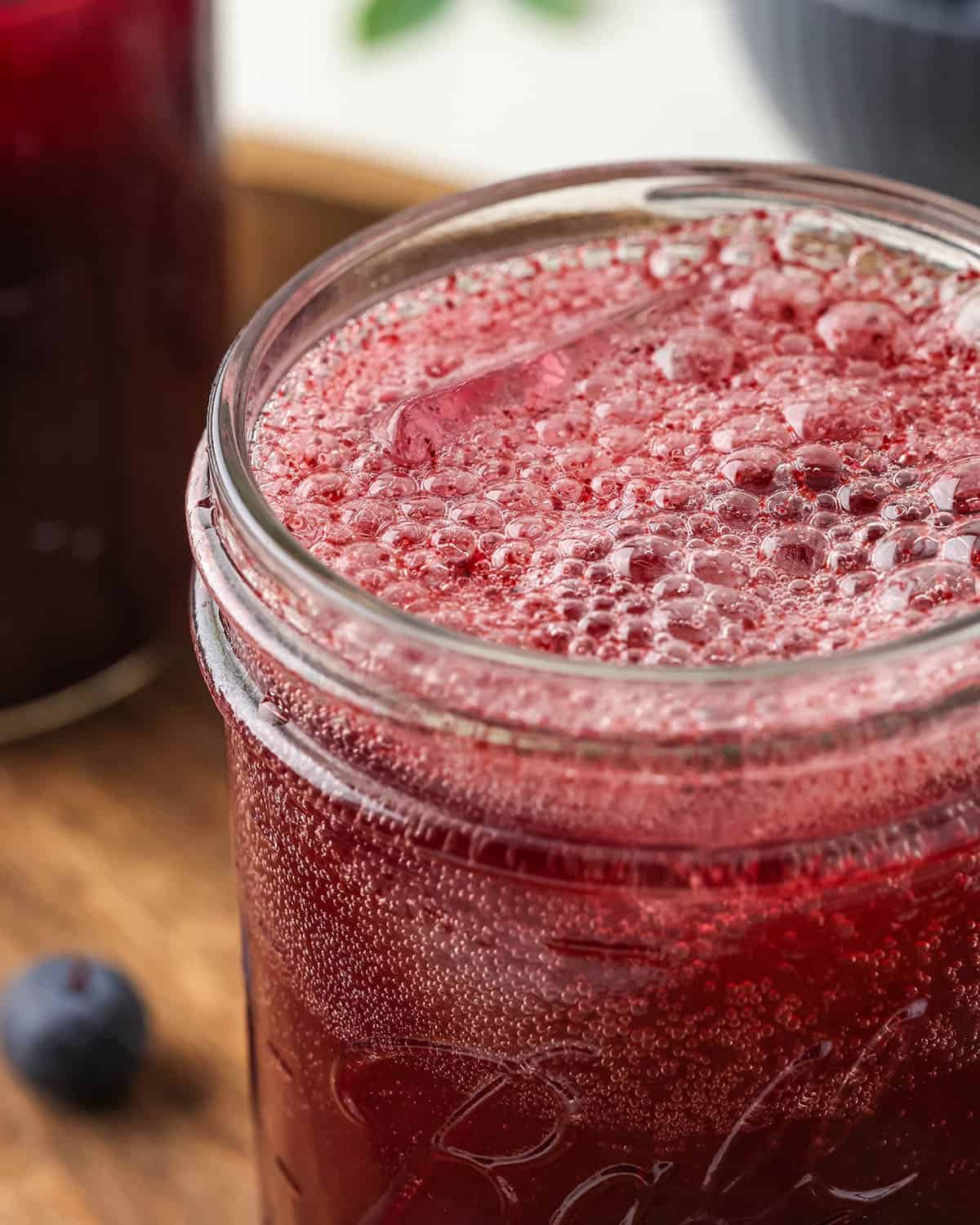
Since it uses kombucha that has already been fermented once, this recipe doesn’t require using a SCOBY (Symbiotic Colony Of Bacteria and Yeast). The second ferment is fueled with sugar and kombucha starter.
Blueberry kombucha is a perfect summery second ferment flavor to make for beginners. If you’re totally new to homemade kombucha and don’t have a first batch started, follow this basic kombucha recipe.
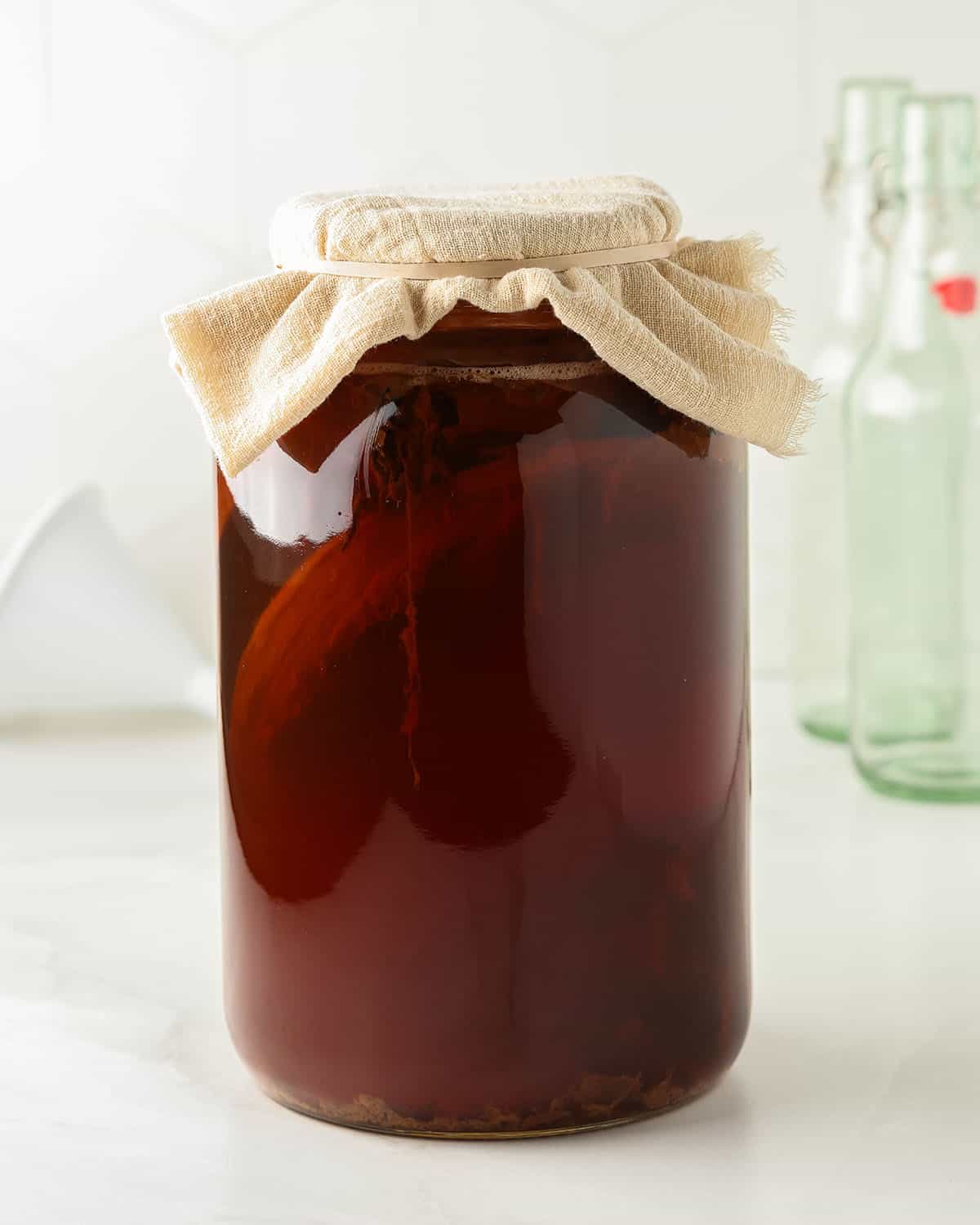
This is the recipe that does require a SCOBY, and is the original fermented tea to use in a second ferment for flavoring kombucha.
SCOBY’s are a little slimy and weird, but they hold so much goodness! So don’t let that stop you.
If making a first batch of kombucha just isn’t your thing and you just want to flavor it with all of your garden herbs, it’s also okay to use unflavored and unpasteurized kombucha from a store.
Benefits of Blueberry Kombucha
Blueberries themselves have tons of benefits! They’re an antioxidant superfood with high levels of vitamins K and C. With the added bonus of kombucha probiotics, this is a great pair!
Need more ways to preserve blueberries? Try fermented honey blueberries or low-sugar blueberry jam!
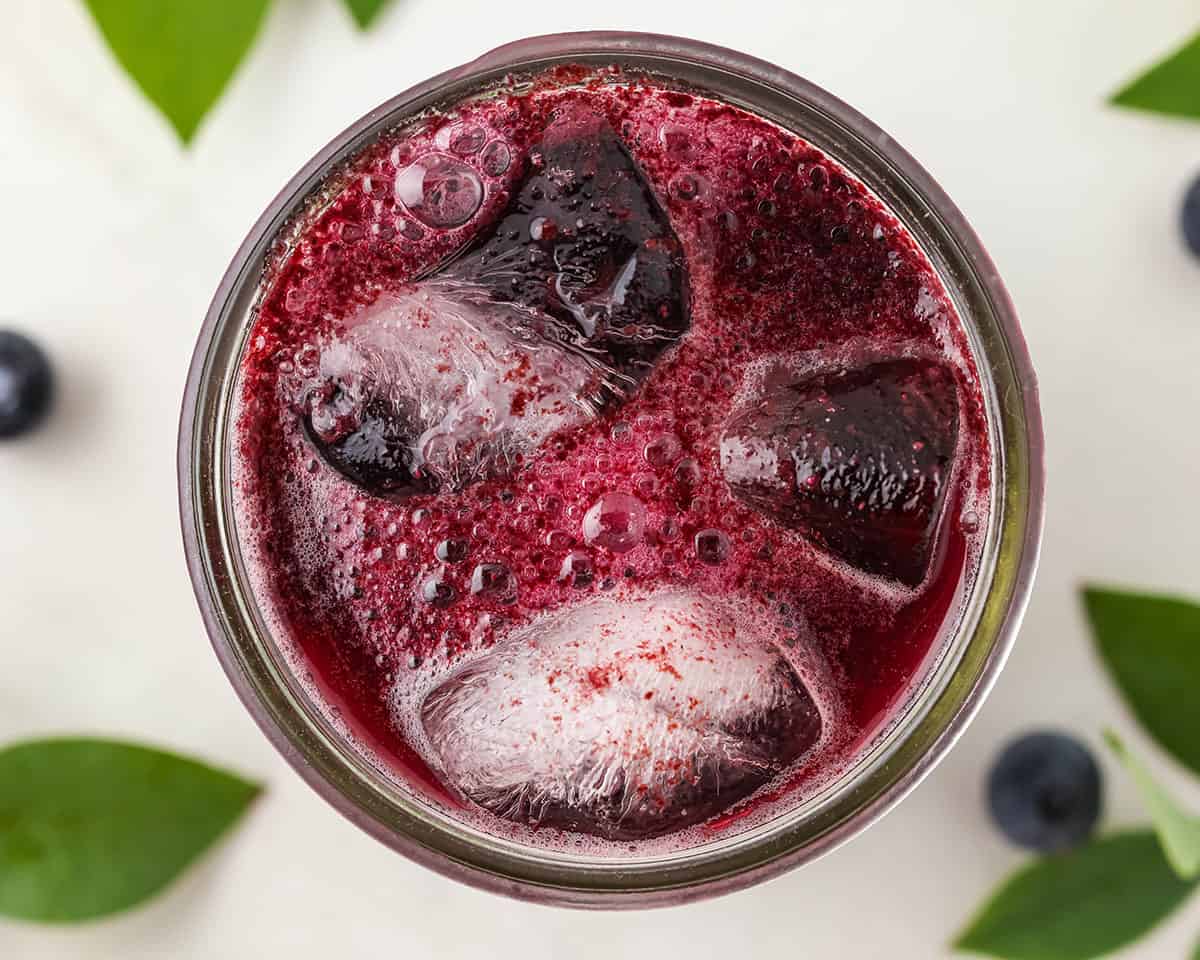
Kombucha is known for providing gut healthy bacteria, and is a wonderful daily drink to replace unhealthy sodas with. The fizz of kombucha is even better, trust me!
Blueberry Flavored Kombucha Recipe
Before you start this recipe, I recommend marking the date that you bottled this kombucha so that you can keep track of how long it’s been fermenting. This helps prevent bottles exploding from built up pressure.
Ingredients
Blueberries: Either fresh grown or frozen are both okay to use. If frozen, I recommend thawing them at room temperature first.
Sugar: I use organic cane sugar. It’s also okay to use honey in this recipe. The flavor will be slightly different, but the kombucha will eat the sugars in the honey to produce carbonation, just like it does with regular sugar.
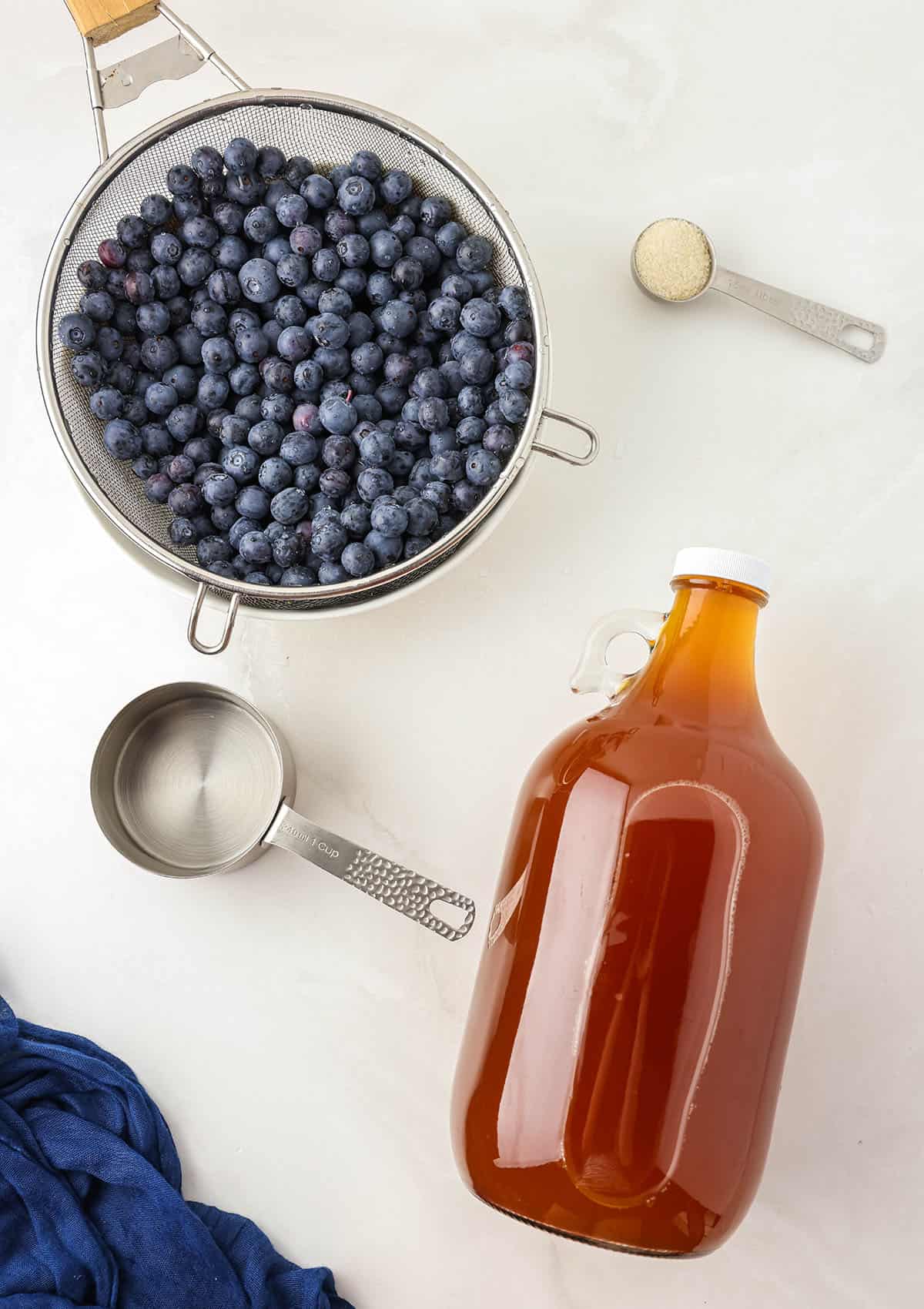
Note: Kombucha needs sugar to eat up in order to produce carbonation. If your blueberries aren’t very sweet, try adding a little more sugar than the recipe calls for.
Fermented kombucha: This is kombucha is the the base starter, it’s okay to use black tea kombucha or green tea kombucha.
Make the Blueberry Puree
First, to make a blueberry puree, combine the blueberries, sugar, and water in a medium-sized pot.
Stir the pot to dissolve the sugar and bring the mixture to a gentle boil on the stove. Let it simmer for 3-5 minutes to break down the blueberries.
Then, remove the pot from heat and set it aside until it cools down to room temperature.
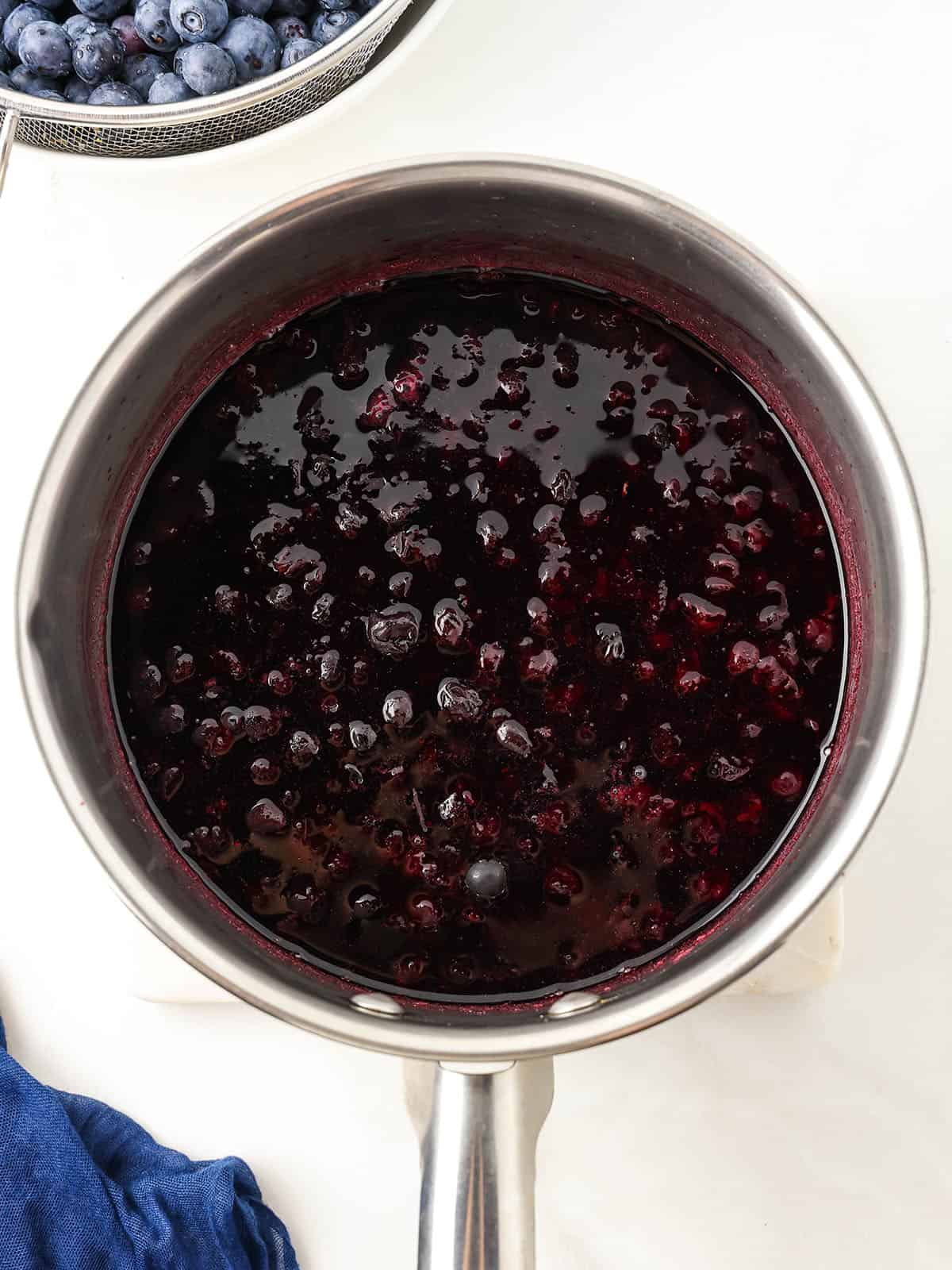
Once the blueberry mixture has completely cooled, pour it into a blender. Blend it on high speed for at least 1 minute to ensure you have a finely blended puree.

Bottle the Kombucha
Gently swirl the fermented kombucha from the first fermentation process before you pour it into the bottles to evenly distribute the yeast.
The little stringy, brown yeasts will eat the sugars and produce carbonation. They tend to hang out in the bottom of the first-fermentation jar, so gently swirling the jar before you pour will bring them up.
Then, use a funnel to pour the fermented kombucha into swing-top bottles, or any bottle that has a tight-fitting lid, to halfway full.
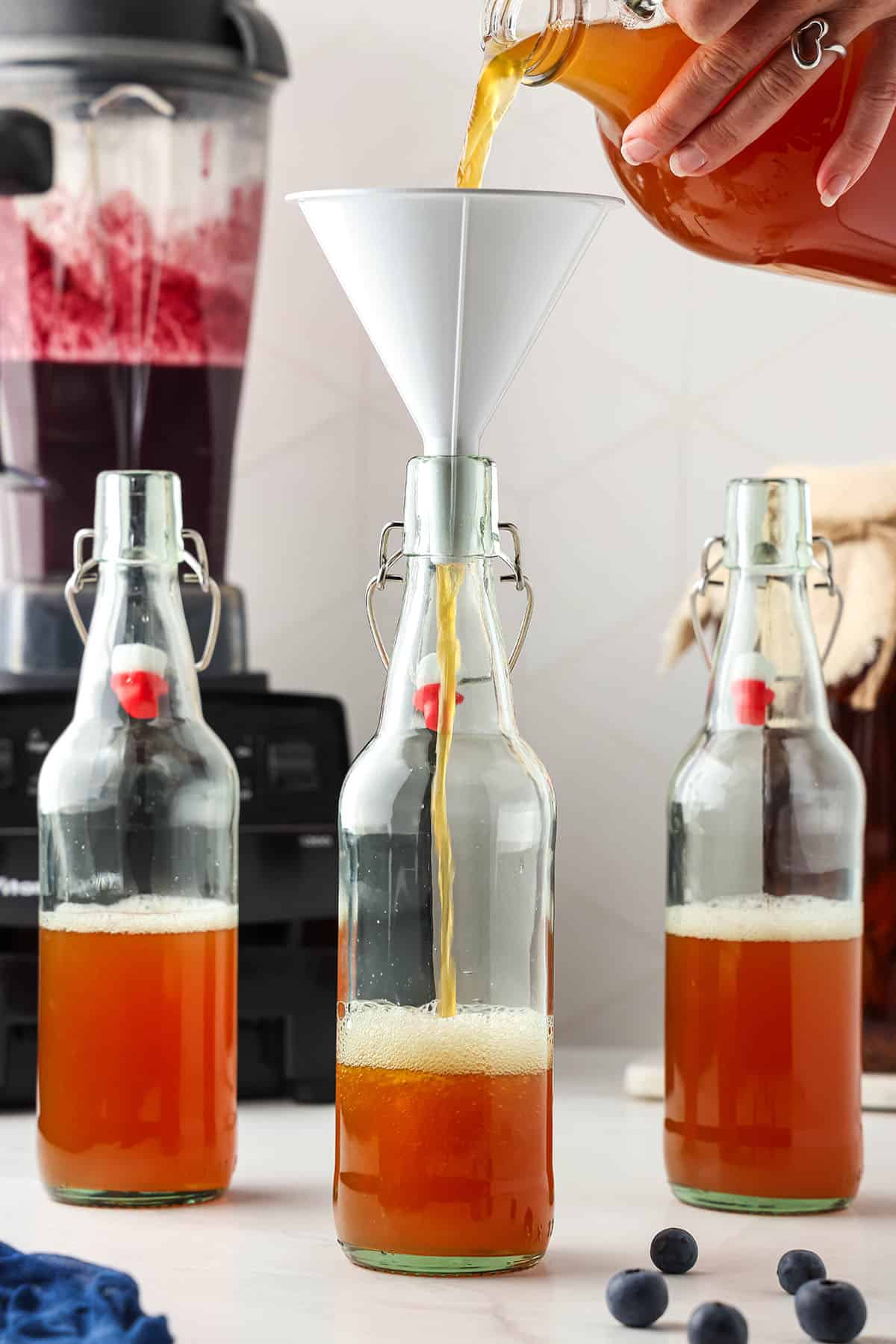
Half should be about one cup per bottle, but it’s ok to adjust the ratio of kombucha to blueberry puree to your liking.
Then add the blueberry puree to each bottle, leaving about an inch of headspace at the top of the bottle.
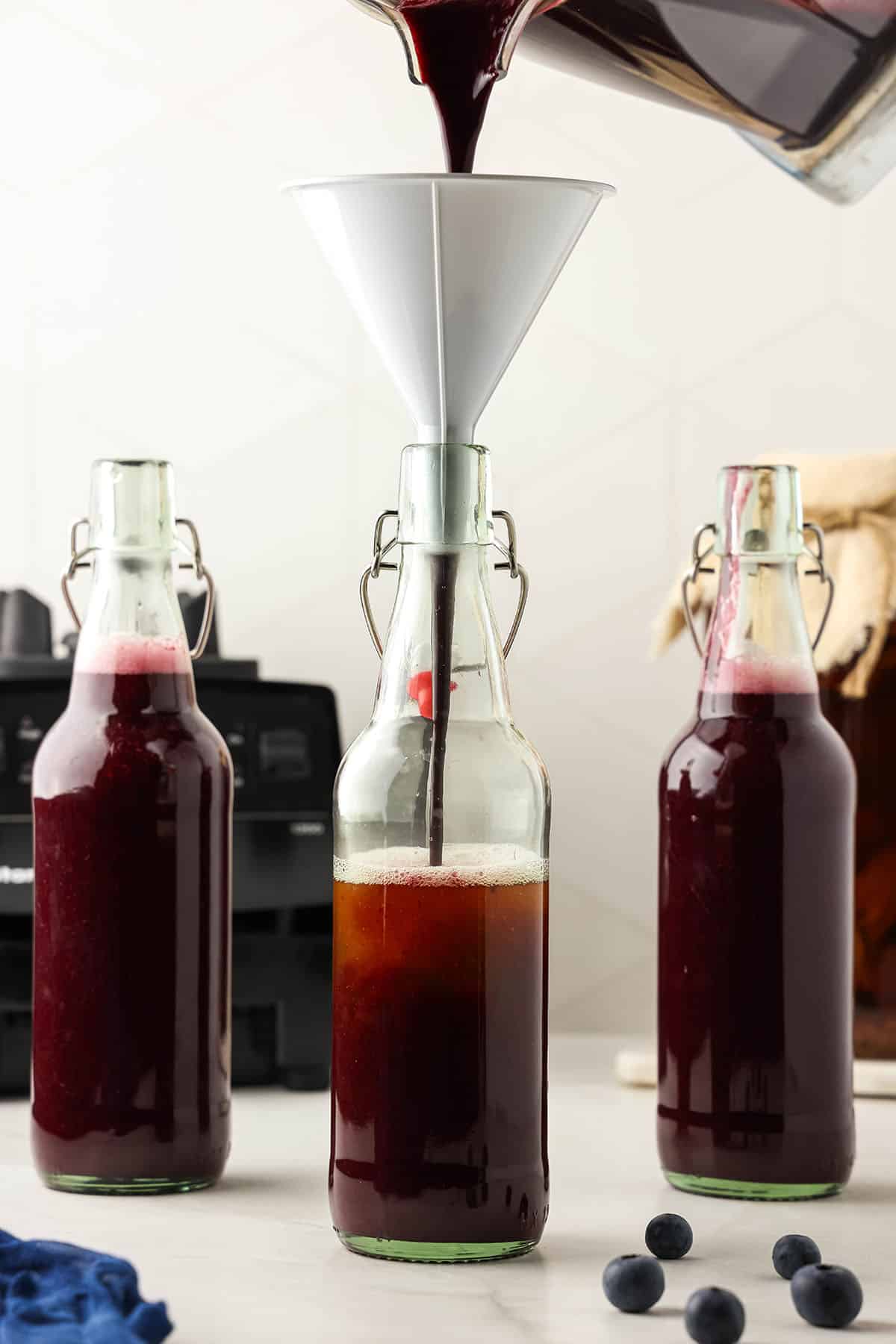
Seal the bottles tightly and store them at room temperature out of direct sunlight.
Note: Carbonation can escape using screw top bottles during the second fermentation process. Swing-top bottles are the best for keeping all that bubbly goodness inside.
How to Know Second Fermentation is Done
As the fermentation process occurs, you will notice little bubbles forming at the top and the yeasts will float. Check the bottles daily and “burp” them at least once daily to release pressure.
It is important to check this kombucha daily for carbonation. Since we are using whole fruit, the kombucha has a tendency to complete the second fermentation process quickly, and it will build up lots of carbonation!
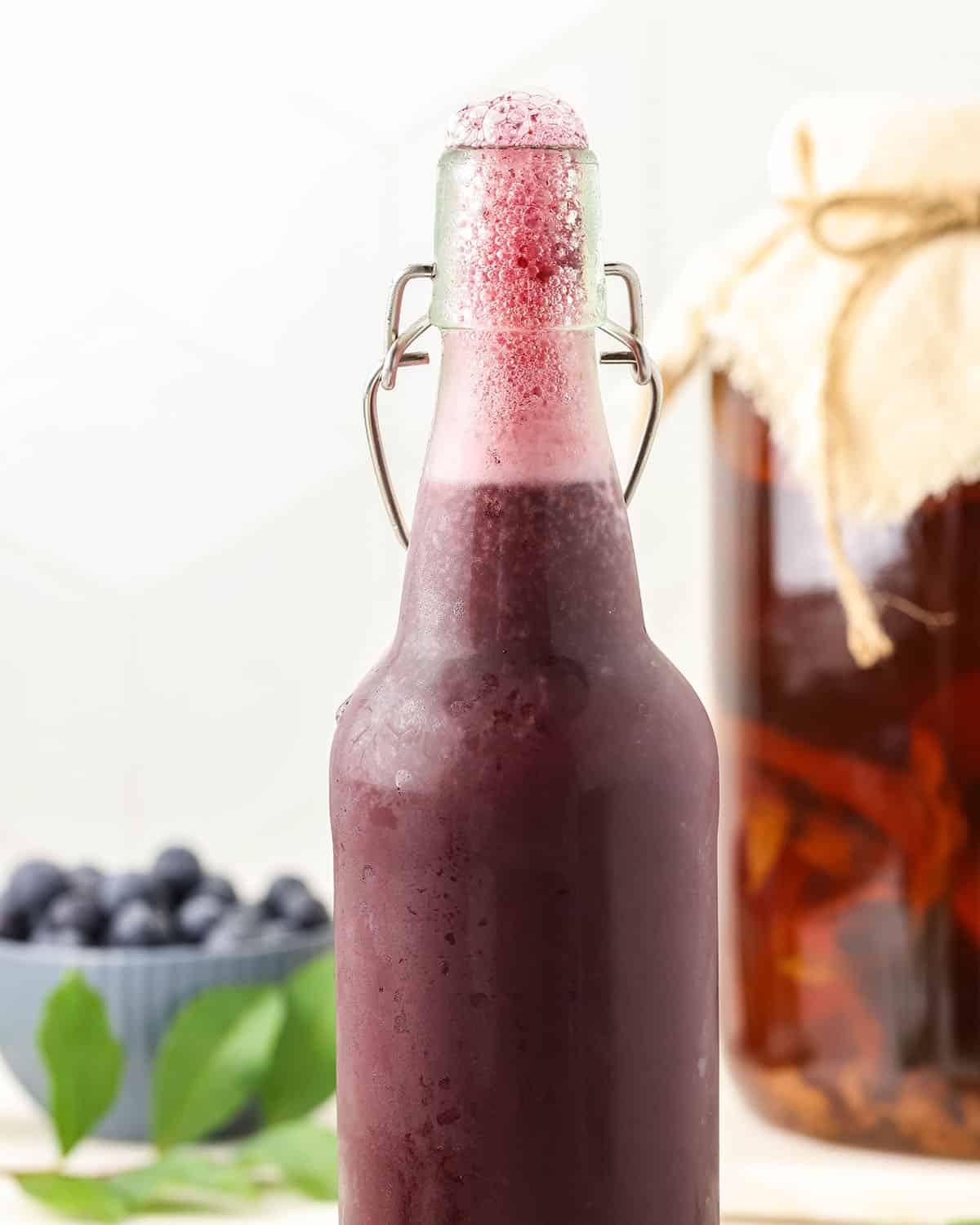
If there is built up pressure and bubbles race to the top, then move the bottles to the refrigerator. The second fermentation process can take anywhere from 3-5 days depending on the ambient temperature.
Warmer temps will ferment faster, and colder weather can slow it down. The bottles can go right into the refrigerator for the second ferment if you prefer, but it will slow down fermentation.
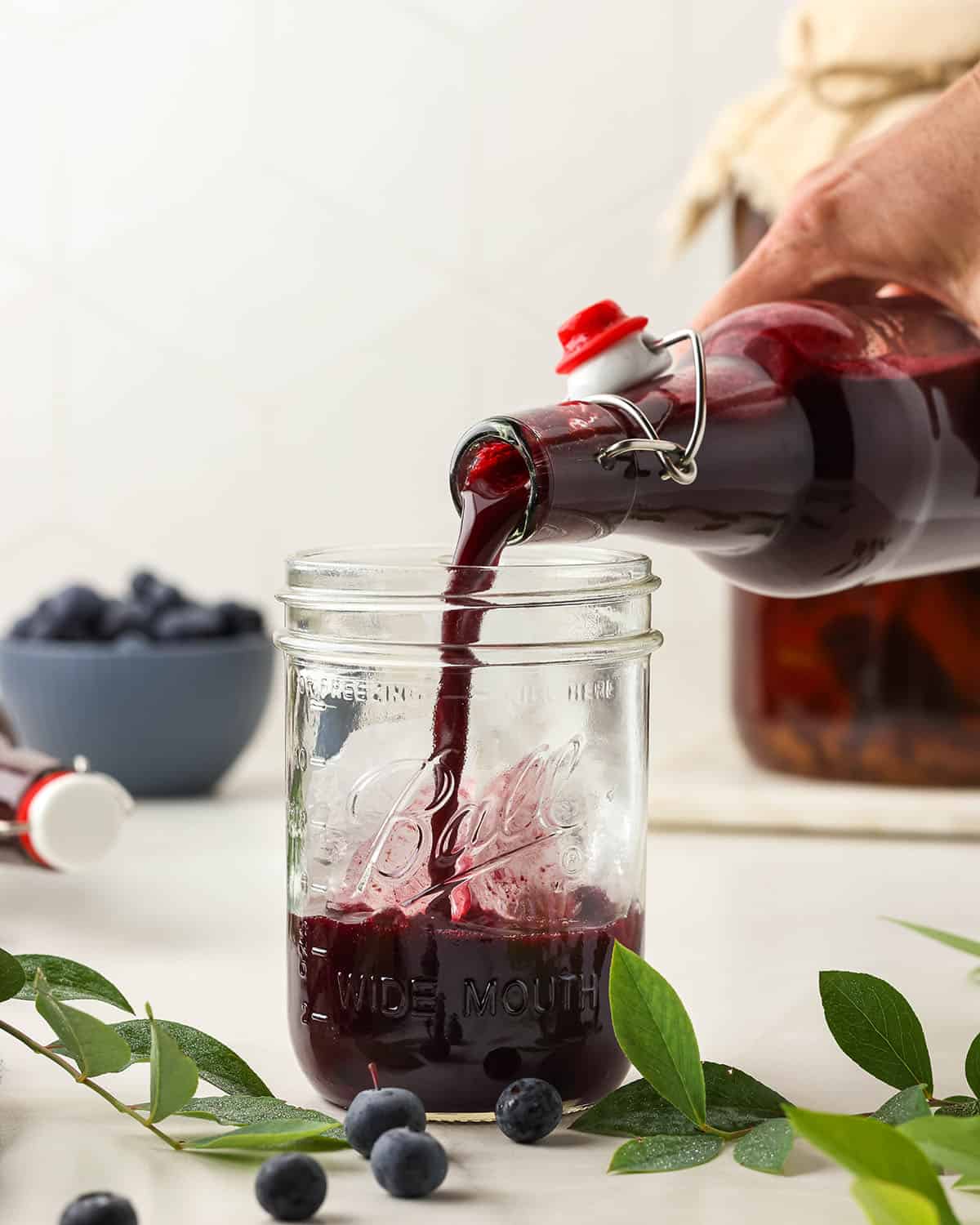
Kombucha Troubleshooting
If it’s been over 5 days and the kombucha isn’t fizzing, a main factor could be the temperature. If you store the kombucha in a cool room, this could slow down the fermentation process.
Simply add a few days to your second fermentation process and continue to check for carbonation.
Other factors could be:
- Not enough sugar
- Lids not tight enough
- Didn’t get enough of yeast distribution
Sip Summery Blueberry Kombucha
Chill the bottles in the refrigerator before serving, then serve over ice on a warm summer day.
This kombucha flavor can be active and very bubbly. I recommend opening your bottles over a sink with a rag on top to keep any messes minimal.
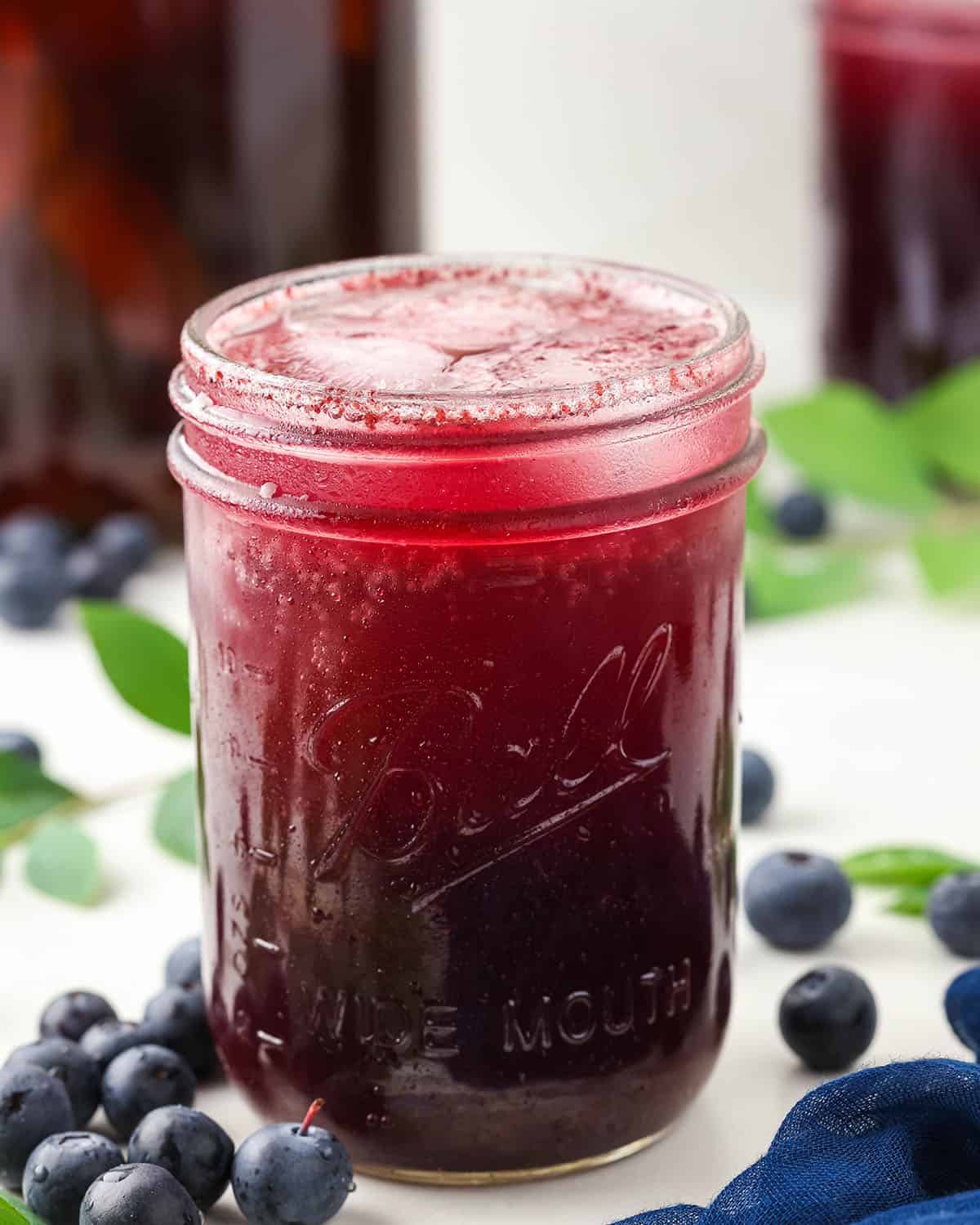
I recommend pairing this homemade kombucha with my wild berry and nectarine galette or this blueberry galette if you’ve got extra berries!
More Summer Berry Recipes
- No-Sugar Blueberry Jam
- Blueberry Skillet Cake
- Skillet Peach and Blackberry Cobbler
- Blackberry Mead
- Skillet Strawberry Cobbler
Best Kombucha Flavors
- Dandelion Kombucha
- Ginger Kombucha
- Hibiscus Kombucha
- Lavender Kombucha
- Rose Kombucha
- Strawberry Kombucha
- Watermelon Kombucha
- Blackberry Kombucha
- Elderberry Kombucha
- Apple Ginger Kombucha
- Pumpkin Kombucha
- Cranberry Kombucha
Blueberry Kombucha
Ingredients
Blueberry Puree
- 3 cups blueberries fresh or frozen
- 3 tablespoons sugar more or less to taste
- 3 cups water
Blueberry Kombucha
- 3 cups fermented kombucha
- 3 cups blueberry puree
Instructions
- Combine the blueberries, sugar, and water in a medium-sized pot. Stir to dissolve the sugar. Bring the mixture to a gentle boil on the stove. Simmer for 3-5 minutes to break down the blueberries. Remove from heat and set aside to cool to room temperature.
- Once the blueberry mixture has completely cooled, pour it into a blender. Blend on high speed for 1 minute to ensure you have a finely blended puree. Set aside.
- Gently swirl the fermented kombucha (from the first fermentation process) before you pour it into the bottles to evenly distribute the yeast.
- Use a funnel to pour the fermented kombucha into swing-top bottles, or any bottle that has a tight-fitting lid, to halfway full (about 1 cup per bottle).
- Add the blueberry puree to each bottle, leaving about an inch of headspace at the top of the bottle
- Seal the bottles tightly and store them at room temperature out of direct sunlight.
- As the fermentation process occurs, you will notice little bubbles forming at the top and the yeasts will float. Check the bottles daily and “burp” them at least once daily to release pressure. If there is built up pressure and bubbles race to the top, then move the bottles to the refrigerator. The 2nd fermentation process can take anywhere from 3-5 days depending on the ambient temperature (warmer temps will ferment faster).
- Chill the bottles in the refrigerator before serving.
Notes
- The ratio of kombucha to blueberry puree in the bottles can be adjusted to your liking. Half and half is a good place to start, but if you want more kombucha and less blueberry puree in each bottle that will work too.
- It is important to check this kombucha daily for carbonation. Since we are using whole fruit, the kombucha has a tendency to complete the second fermentation process quickly, and it will build up lots of carbonation!
- This flavor can be active and very bubbly. I recommend opening your bottles over a sink with a rag on top to keep any messes minimal.
- The bottles can go right into the refrigerator for the 2nd ferment if you prefer, but it will slow down fermentation.
- Be sure to mark the date that you bottled so that you can keep track of how long it’s been to help prevent any bottle explosions due to built up pressure.

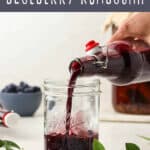
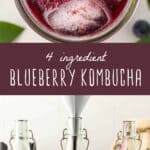
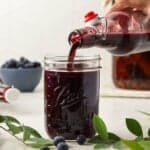

If I want to use honey instead of sugar, how much do I use and when do I add it? I assume I don’t want to boil it, because then I lose the benefits, yes? Thanks!! Love your website so much!!!!
To use honey instead of sugar, you’ll need to replace the sugar at a 1:1 ratio. I would add the honey after cooling the blueberry and water mixture.
Such a wonderful idea, we love it so much.
I just added 2 little pieces of candied ginger and reduce the sugar to 2C+1/2C.
Thank you!
Isabel
I’m so glad you liked this recipe. Enjoy!
Looks so good and I’m going to try but I’m confused it says; Combine the blueberries, sugar, and WATER in a medium-sized pot, there’s no mention of water in the recipe 🤷🏼♀️
Sorry about that. I left off the water from the ingredient list. There should be 3 cups of water.
Hi how much water to place in the pot with blueberries and sugar?
Sorry about that. I left off the water from the ingredient list. There should be 3 cups of water.
Hello.
Thank you for the delicious sounding recipe.
On step 1 you wrote to mix the blueberries with sugar and water – but I don’t see water in the ingredients. Do you mix water with the purée when cooking the blueberries with sugar? How much water?
Thank you!
Sorry about that. I left off the water from the ingredient list. There should be 3 cups of water.